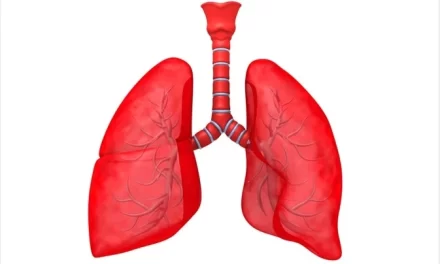The Paleo diet or Paleolithic diet is a regimen that adopts the diet of our ancestors to lose weight, increasing energy, and improving health. The diet includes animal and vegetable proteins, plants, and oilseeds, prepared in healthy, varied, satisfying, and delicious dishes.
Benefits of the Paleo diet
Those who recommend the Paleo diet assure that this eating plan is more suitable to the current physiobiological needs of the human being.
This diet allows:
Reduce body fat
Increase energy
Improve physical performanceIn addition, it provides other health benefits, which can vary from person to person. It can help reduce digestive problems, normalize intestinal transit, and prevent diseases such as diabetes, obesity, hypertension, and osteoporosis, among others.
What is the Paleo diet?
The Paleo diet includes animal and plant proteins that provide satiety, eliminating processed foods and starches that cause weight gain. Along with this, it increases the number of fruits and vegetables, improving digestion and intestinal transit.
Allowed foods and prohibited foods
The allowed foods are:
Lean meats
Fish and seafood
Fruits and vegetables
Eggs
Raw vegetable oils
WalnutsThe prohibited foods are:
Dairy products
Cereals and legumes
Tubers (Potato, cassava, sweet potato)
Processed foods
Sugars and sweets
Fizzy Drinks Paleo DietHow Much Weight Can You Lose On The Paleo Diet?
Although the weight loss achieved with the Paleo diet depends on each person, people who follow this meal plan lose weight quickly, along with an increase in energy that helps increase exercise practice, improving the turn muscle toning.
An important recommendation to lose weight with the Paleolithic diet is to maintain it over time. If the diet is interrupted, the weight is regained very easily.
The key so that this does not happen is to continue the diet for life, following the basic principles of the Paleodiet, that is, following an eating plan based on quality lean proteins and natural foods. Many people prefer not to eat a restrictive diet but to include some of these practices in their eating plan to improve their health.
Increasing the consumption of fruits and vegetables, opting for lean meats instead of fatty meats, and reducing the consumption of sugary or processed products are health habits recommended by all nutritionists.
Did you know the Paleodiet? Leave your comments and recommendations. Please share this article on your social networks because your friends will want to try it.
This article will take a tour of the paleo diet, starting with knowing what it is, what are the foods that can be eaten, the foods to avoid, the most important benefits and properties, its drawbacks, its use to lose weight, ending with a proposal menu to make it bearable and delicious.
What is the Paleo Diet? What does it consist of?
The Paleo Diet, or Paleolithic Diet, is a nutritional regimen whose foods are similar to those that (theoretically) our ancestors ingested during the Paleolithic period, which ended with the development of agriculture scarcely 10,000 years ago.
The postulate that popularizes this diet is a genetic predisposition of the human being to adapt to a diet like the one followed by the Paleolithic man, a diet rich in protein and fat and low in carbohydrates.
With a diet like this, and physical activity (non-sedentary lifestyle), it would be possible to reduce the incidence of certain diseases (diabetes, heart disease, obesity, etc.), providing important benefits daily.
Foods for a Paleo Diet
There is no consensus on which diet the Paleolithic man followed, especially when with high probability differences depend on the region or zone considered. It is possible that in some cases, the food was mainly of animal origin (diet with high protein content), while in other cases, there could be an abundance of fruits and vegetables (with a higher proportion of carbohydrates).
For practical purposes, the foods of the current paleo diet can be summarized into the following food groups:
Meat, generally beef, lamb, chicken, pork, etc., that is, meats that are widely consumed in omnivorous diets today.
Fish, such as trout, salmon, pollock, or numerous shellfish.
Vegetables include tomatoes, carrots, onions, broccoli, lettuce, kale, celery, etc.
Fruits, highlighting bananas, apples, oranges, strawberries, peaches, etc.
Almonds, walnuts, sunflower seeds, pumpkin seeds, etc.
Potatoes, bat ties, turnips, etc.
Eggs.You can also include some vegetable oils, such as olive oil.
In any case, in the paleo diet that has become popular across the globe, some foods such as gluten-free grains (such as rice) or individual jars of butter can be included, relaxing the strict diet that our ancestors followed.
Some beverages such as tea or coffee, which were not known to Palaeolithic man, are drinks consumed and popularized by the Paleo community.
Foods to Avoid on the Paleo Diet
The foods prohibited in this diet and our Paleolithic ancestors did not consume are mainly processed foods, grains, seeds, legumes, sugars, artificial sweeteners, and most dairy products.
Vegetable oils were not consumed either (such as soybean, sunflower, corn oil, etc.).
More foods that are the antithesis of the paleo diet are labeled “low-fat,” “diet,” etc., or simply those with many additives.
The inclusion of grains, seeds, and legumes in the diet of the human being was after the Paleolithic, coinciding with the development of agriculture. For this reason, they are not included in the list of foods of the Paleolithic diet either.
Benefits of the Paleolithic Diet
A diet that dispenses with processed foods is a diet that tends to be healthy. That is why it is usually associated with benefits and properties:
The Paleo Diet helps control Cholesterol
Cholesterol is a risk factor for diseases as important as heart disease. The implementation of this diet is related to a reduction in total Cholesterol and bad Cholesterol. Furthermore, it also shows a positive correlation with a potential reduction in blood pressure.
The two aspects mentioned above are two of the main risk factors for heart disease. Therefore, this diet ultimately promotes a healthy state of the heart.
The Paleo Diet allows you to control your blood sugar.
This article talks about sugar and some potential substitutes. Having high blood sugar levels is dangerous and must be avoided.
Through the Paleolithic diet, it is possible to control blood sugar levels due to a greater sensitivity of the hormone insulin. This is especially relevant for people with type 2 diabetes.
In addition, this diet is associated with another benefit that may be interesting for the summer. Keep reading!
Paleo Diet for Weight Loss?
Considering the foods for a paleo diet indicated above, with meat and fish in a preferential position, and assuming that the proportion of carbohydrates is reduced with conventional diets, it is a diet with the potential to promote weight loss.
In addition, the absence of processed foods greatly minimizes the intake of “empty” calories.
An important aspect is that high-protein diets decrease the levels of the so-called hunger hormone (ghrelin) so that the feeling of satiety is longer, and with this, the daily caloric intake tends to be reduced.





